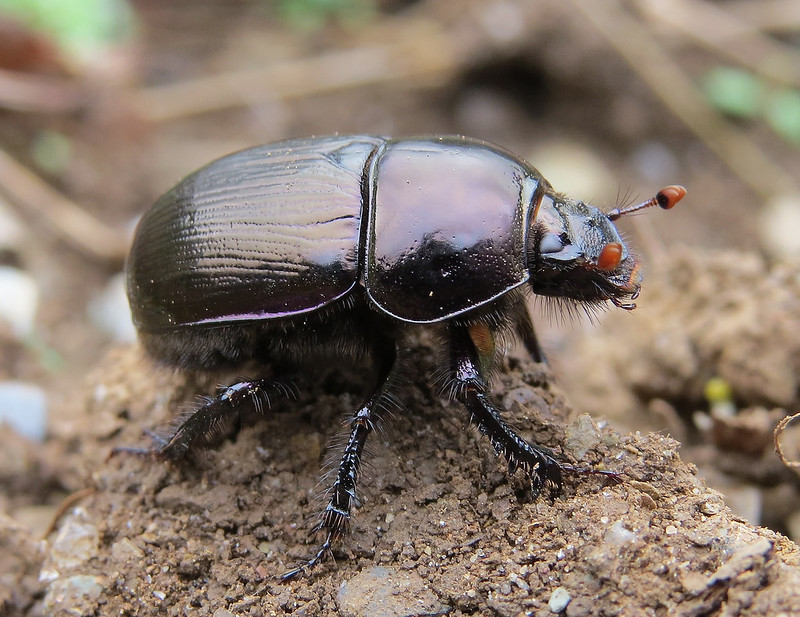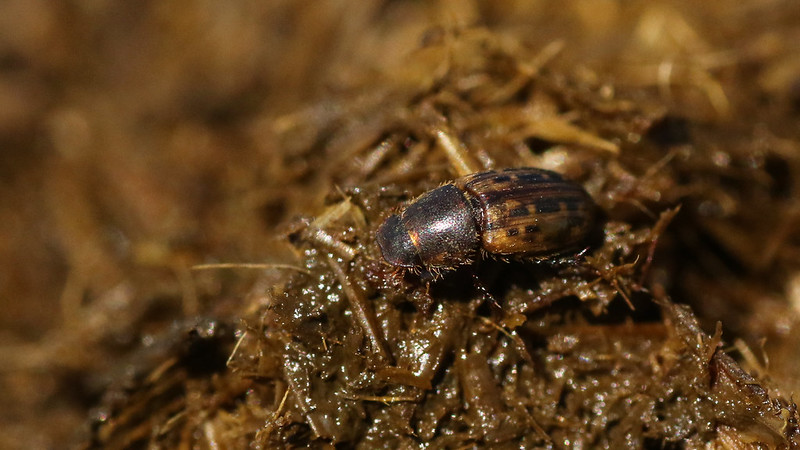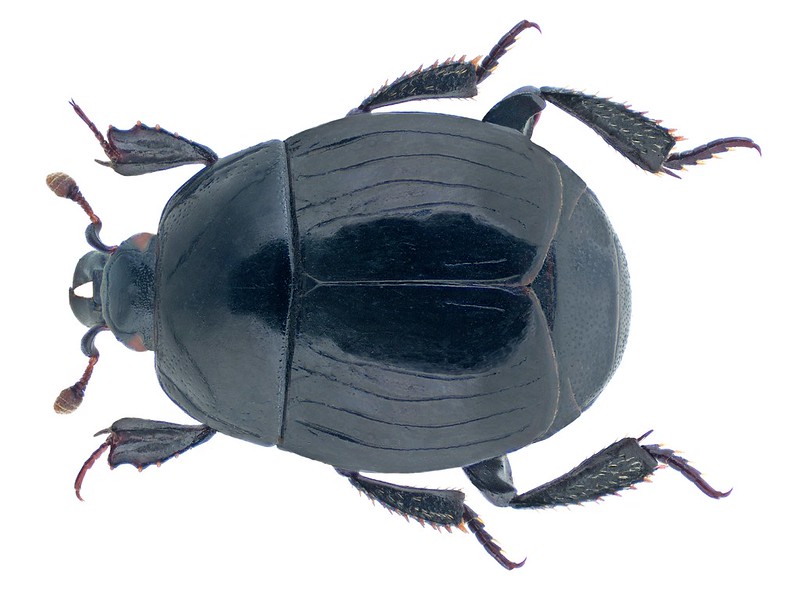Dung is an important microhabitat for lots of invertebrates. 400 invertebrateAn animal that doesn't have a backbone, such as insects, spiders, worms, crabs and slugs. More species, mainly beetles and flies, use dung habitats. They generally prefer fresh to mid-aged dung from herbivores such as cattle. The best dung invertebrate assemblages tend to be on dry, freely-draining soils such as sand, chalk and limestone where the sward is short and there are patches of bare ground.
Different invertebrates use dung in different ways. The larvae of species such as dung beetles and dung flies feed on the dung itself. Other species such as featherwing beetles (some of the smallest beetles in the world) and silken fungus beetles develop on fungi that grows on dung. The majority of rove beetles and house flies prey on insects that feed on dung.
Dung invertebrates are very important on farmed land as they help to maintain healthy, productive soils and grasslands. For example, the minotaur beetle, which occurs widely across Devon, buries dung in tunnels as a food store for its larva. The tunnels can be up to 1.5m deep and help to re-distribute nutrients, improve drainage and aerate the soil. Dung invertebrates also prevent excessive pasture fouling. Where they’ve been killed by veterinary pesticides, the productivity of a field drops substantially.
Dung beetles are an important food source for species such as birds and bats, in particular for greater horseshoe bats which are a Devon Special Species.
Britain’s most diverse dung assemblages are in southern England and Wales. In Devon, the most interesting assemblages are on the Braunton and Northam Burrows SSSISite of Special Scientific Interest More and SACSpecial Area of Conservation More, and the acid grassland and dry heaths around the edges of Dartmoor, including Harford and Ugborough Moor and Holne Moor (within South Dartmoor SSSI). In 2024, a Dartmoor dung beetle survey assessed the area to be of European importance for its dung beetle assemblageA group of different species that are found together in one place. More. See Find out more below.
By contrast, the waterlogged clay soils of the Culm Measures, which occupy much of mid-Devon, do not appear to have such an interesting dung fauna.
The following threatened, near threatenedA species likely to qualify for threatened category in the future, perhaps very quickly. More and nationally rare dung invertebrates have been recorded in Devon. The hornet robberfly is also listed here, as it’s a dung specialist and a UK Priority Species.
Obscure clown beetle Margarinotus obscurus: Shillingford area.
A dung beetle Onthophagus nuchicornis: Northam Burrows and Torbay area.
A dung beetle Euheptaulacus sus: Northam Burrows.
A dor beetle Geotrupes mutator: Dartmoor: Teign valley, including Whiddon Deer Park; Chudleigh Knighton Heath; Buck Tor; Chagford.
A dung beetle Sigorus porcus: Dartmoor: Buck Tor, Bellever area and Tavistock area.
Scarce dung clown beetle Hister bissexstriatus: Westwood area.
Hornet robberfly Asilus crabroniformis: numerous sites in south Devon.
Dung invertebrate assemblages are not listed as features of interest for SSSI designations.



